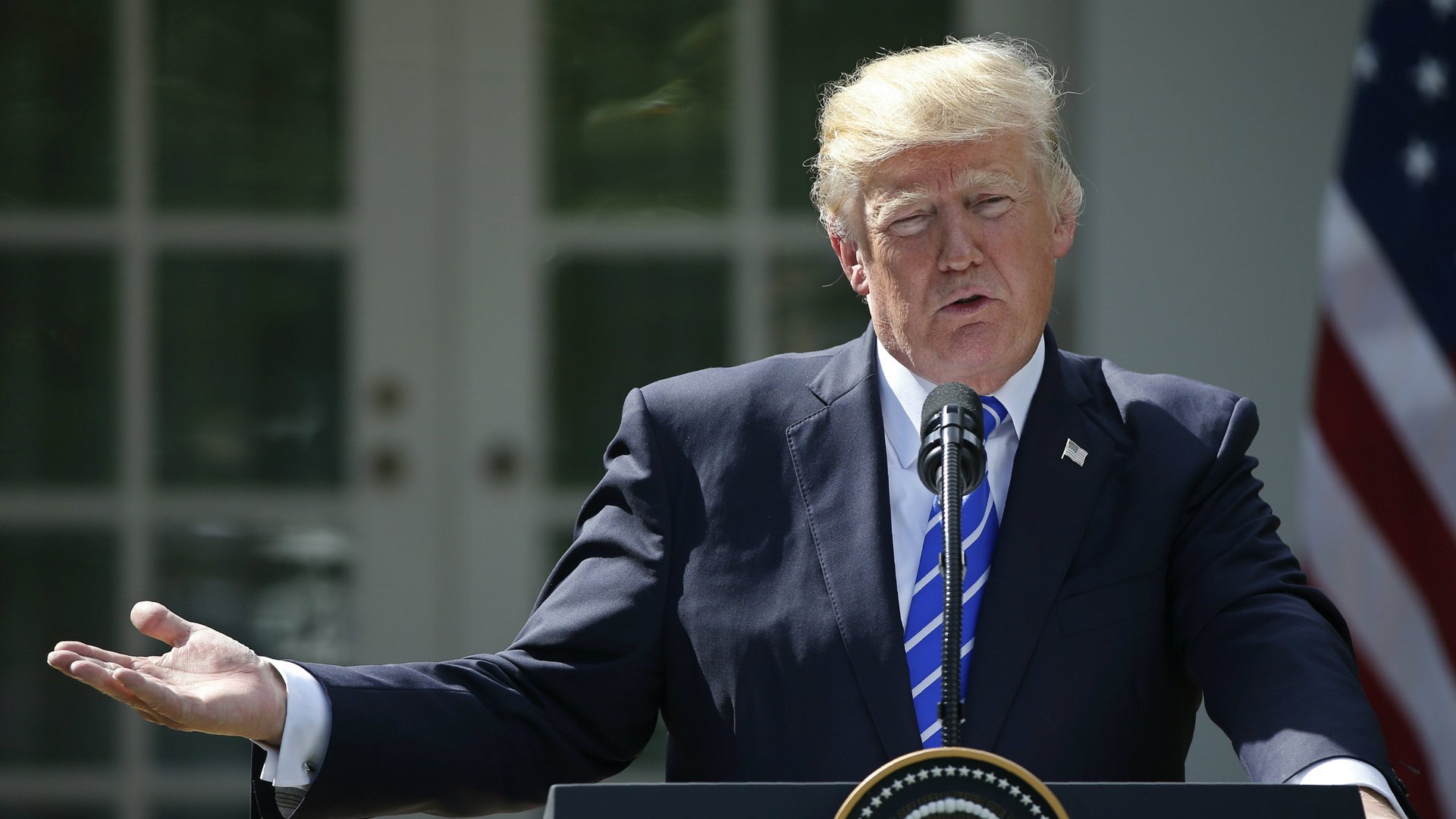What Trump has gotten right about Puerto Rico
After ending days of relative silence, US president Donald Trump and his administration are scrambling to show he cares about Puerto Rico after Hurricane Maria completely devastated the island.


After ending days of relative silence, US president Donald Trump and his administration are scrambling to show he cares about Puerto Rico after Hurricane Maria completely devastated the island.
Within 24 hours, Trump tweeted about the destruction (in posts many found critical rather than sympathetic), a high-level White House meeting on the hurricane was added to his schedule, the directors of the Federal Emergency Management Agency (FEMA) and the Department of Homeland Security (DHS) took questions from reporters, officials handed out statistics about relief efforts, and Trump held a press conference outside the White House to discuss the issue.
Trump will visit Puerto Rico next week, the earliest he can go, he said, without disrupting relief efforts. He complimented the spirit and bravery of the Puerto Rican people and affirmed the island of 3.4 million American citizens was very important to him—while also offering excuses for why government aid had been slow to arrive: “The infrastructure was in bad shape as you know in Puerto Rico before the storm. And now in many cases, it has no infrastructure, so it’s, you’re really starting from almost scratch.”
An official said Tuesday that the government’s priority is to provide food, water, and rolled sheeting for roofs, with the US military sending 10 flights per hour carrying aid to the island.
An island in a tough spot
Critics contend the administration responded differently when recent hurricanes hit Texas and Florida, where the arrival of federal aid was almost instant. But the president insisted at the White House meeting that the situations were very different.
“It’s very tough, because it’s an island,” he said. “In Texas, we can ship the trucks right out there. And you know, we’ve gotten A-pluses on Texas and on Florida, and we will also on Puerto Rico. But the difference is, this is an island sitting in the middle of an ocean. And it’s a big ocean. It’s a very big ocean. And we’re doing a really good job.”
In any case, it has been a harder job: The hurricane damage in Puerto Rico was virtually all-encompassing, especially given the island’s relatively small size, throwing initial aid efforts into stark relief. US congresswoman Representative Nydia Velazquez, a New York Democrat, compared Trump’s response to George W. Bush administration’s disastrous handling of Hurricane Katrina in 2005. Republican senator Marco Rubio of Florida told Politico what he is “more concerned about in the next 48 to 72 hours is ensuring that we don’t have a Katrina-style event,” before meeting with vice president Mike Pence on Tuesday.
Trump has certainly left himself open for criticism by those who say his response to the crisis in Puerto Rico has not reflected empathy or a determination to set things right as quickly as possible.
Yet it is hard to argue that the conditions in Puerto Rico aren’t more difficult to address than those in Florida or Texas, for some of the reasons Trump cites, including the complications of its island location and an antiquated power grid. There’s also the matter of a 100-year-old maritime law that prevents many ships from entering Puerto Rico’s ports.
The Jones Act limitations
Almost half of Puerto Ricans don’t have enough water or food in the wake of Maria—and protectionist US trade regulations are making it difficult to send enough supplies.
There are dozens of cargo flights landing on Puerto Rico, but they can only carry about 100,000 lbs (45,000 kg) at a time. The island really needs supply ships, which can carry millions of pounds.
The Jones Act, passed by Congress in 1920, says that only American-built and -crewed ships can carry goods between US ports. That limits the amount of aid Puerto Rico is able to accept from abroad because there are only about 100 large vessels that meet those requirements.
The government granted a waiver for Hurricanes Harvey and Irma but has not done so for Puerto Rico—despite formal requests from several members of Congress.
DHS, which has the power to waive the Jones Act in times of national crisis, has said the situation in Puerto Rico is different than Texas or Florida because Harvey and Irma put high-capacity fuel pipelines out of commission, and boats were needed to move supplies. “The limitation [in Puerto Rico] is going to be port capacity to offload and transit, not vessel availability,” said Gregory Moore, a DHS spokesman for Customs and Border Protection, said in a statement.
On a conference call today (Sept. 27), DHS said it is still weighing the waiver request.
A no-alternative energy system
The pace of recovery in Puerto Rico can also be attributed to the pre-storm condition of its electrical infrastructure.
All residents on the island are completely without power after Maria. Puerto Rico’s electrical grid was already in rough shape before the storm. The Puerto Rico Electric Power Authority (PREPA)—which has said it needs $4 billion to replace its plants—filed for bankruptcy July 2.
Puerto Rico relies almost entirely on fossil fuels to power its aging electrical grid. While cities and homes in Texas and Florida that had invested in solar panels were able to restore power relatively quickly, solar wind and water account for only 2% of Puerto Rico’s energy source.
More than half of Caribbean nations rely almost exclusively (pdf) on fossil fuels, according to the International Monetary Fund. This is an economic issue for nations reliant on crude imports, and becomes a humanitarian one during hurricane season, when storms leave millions in the dark.